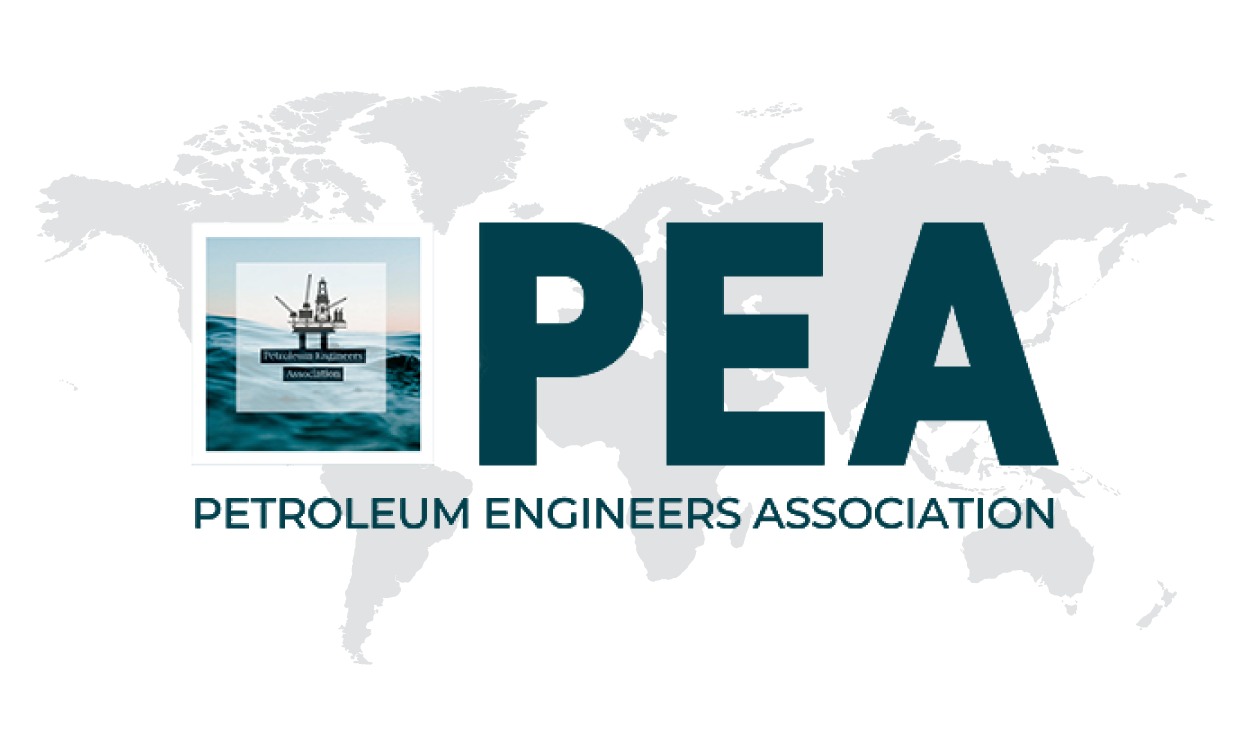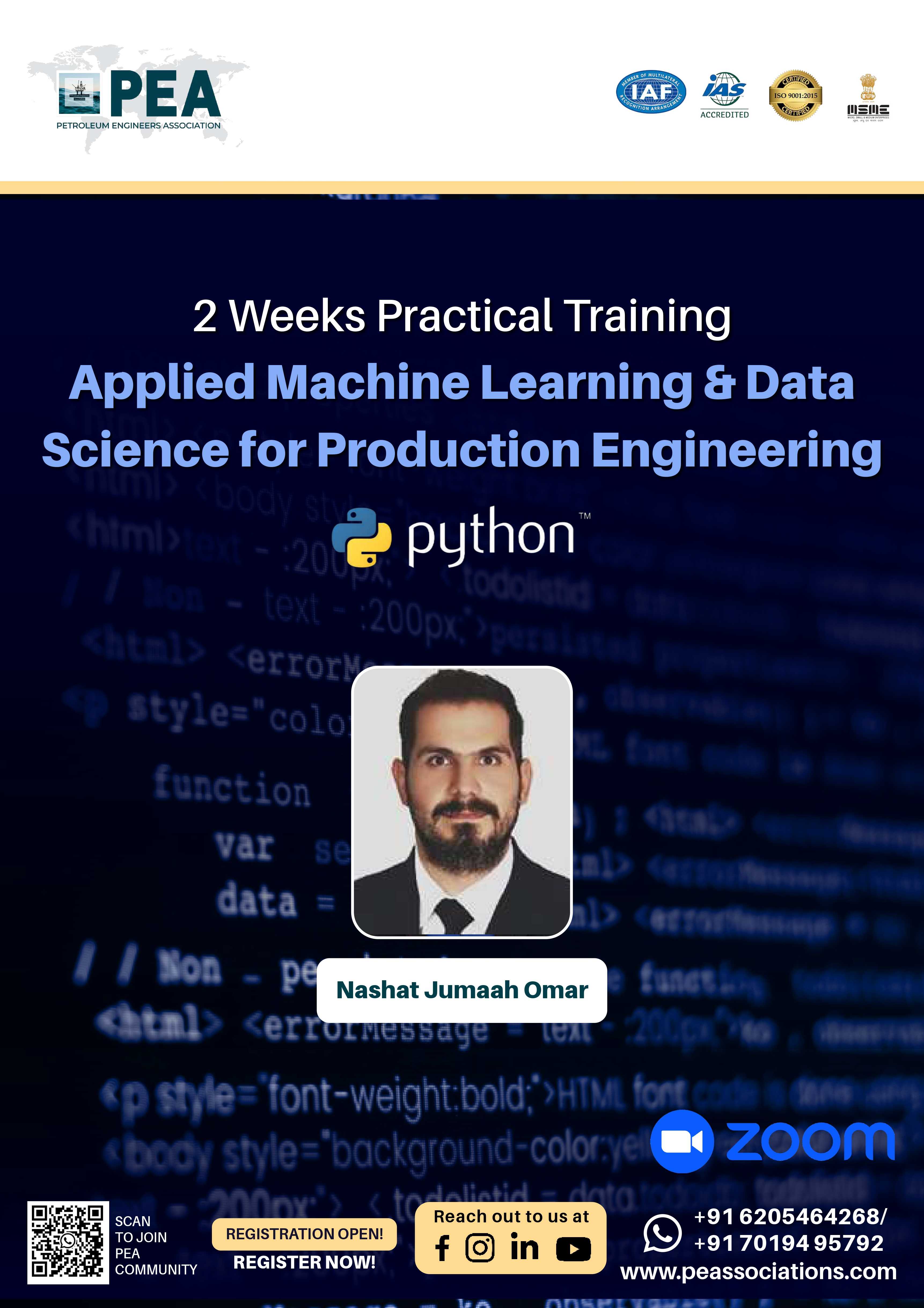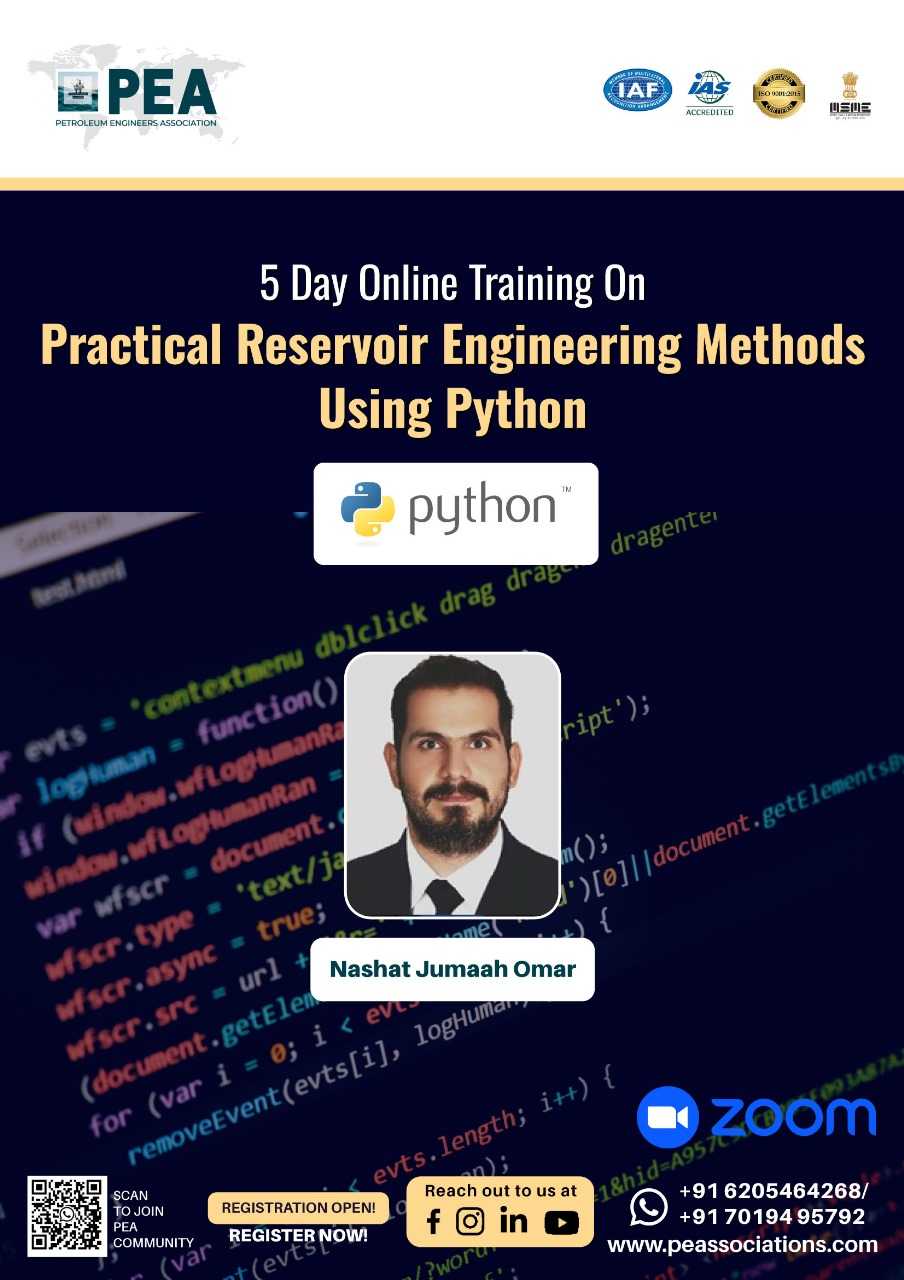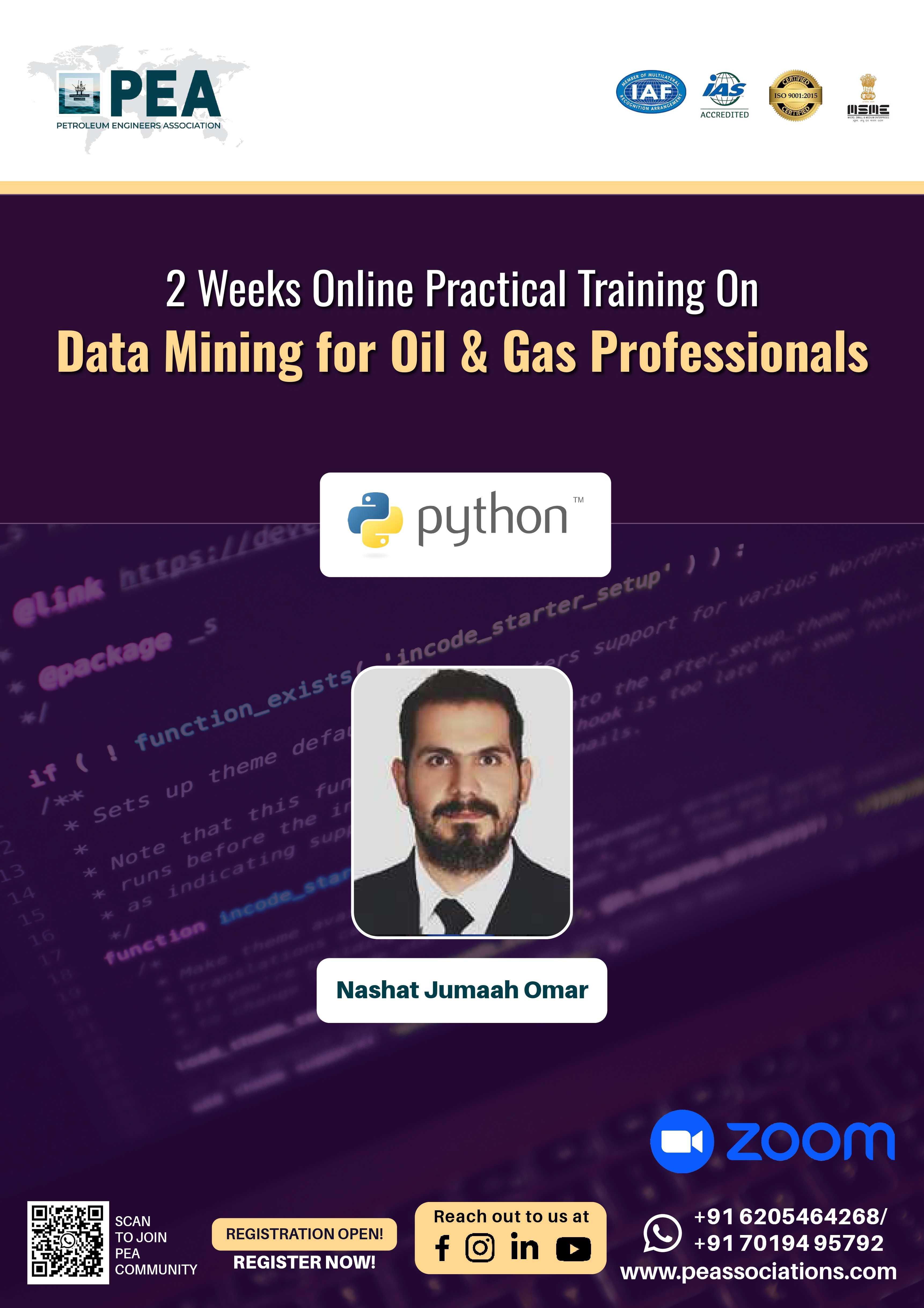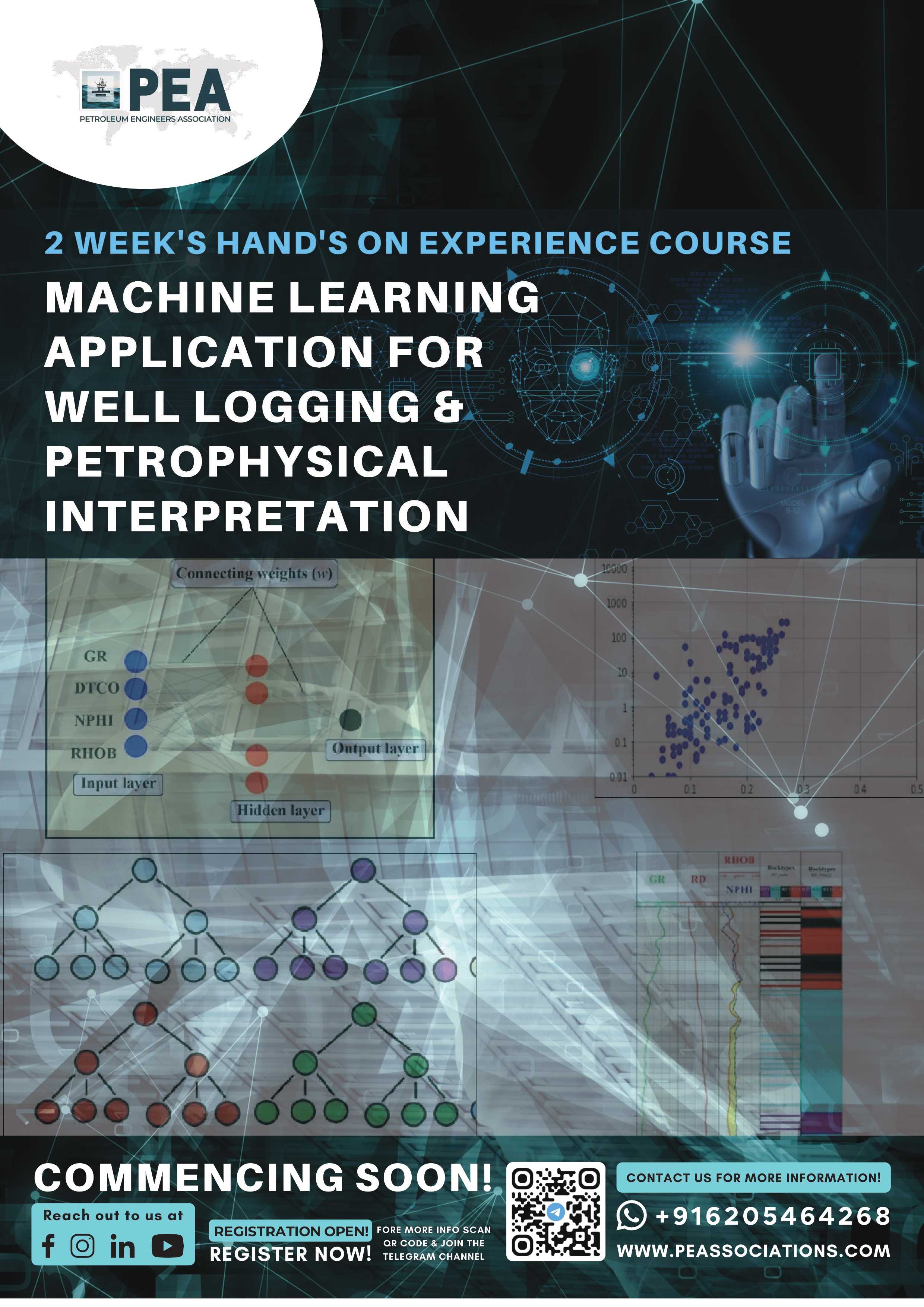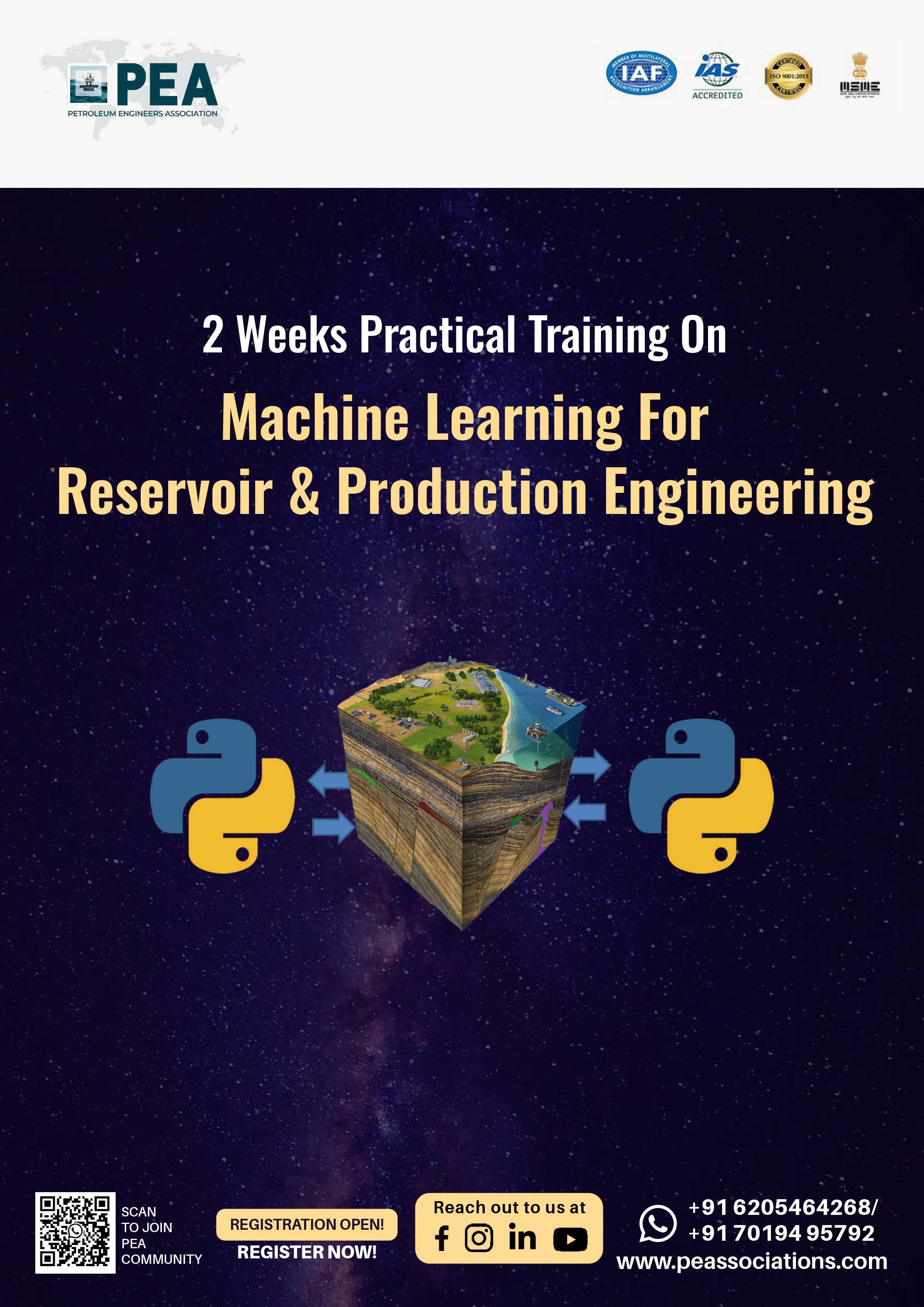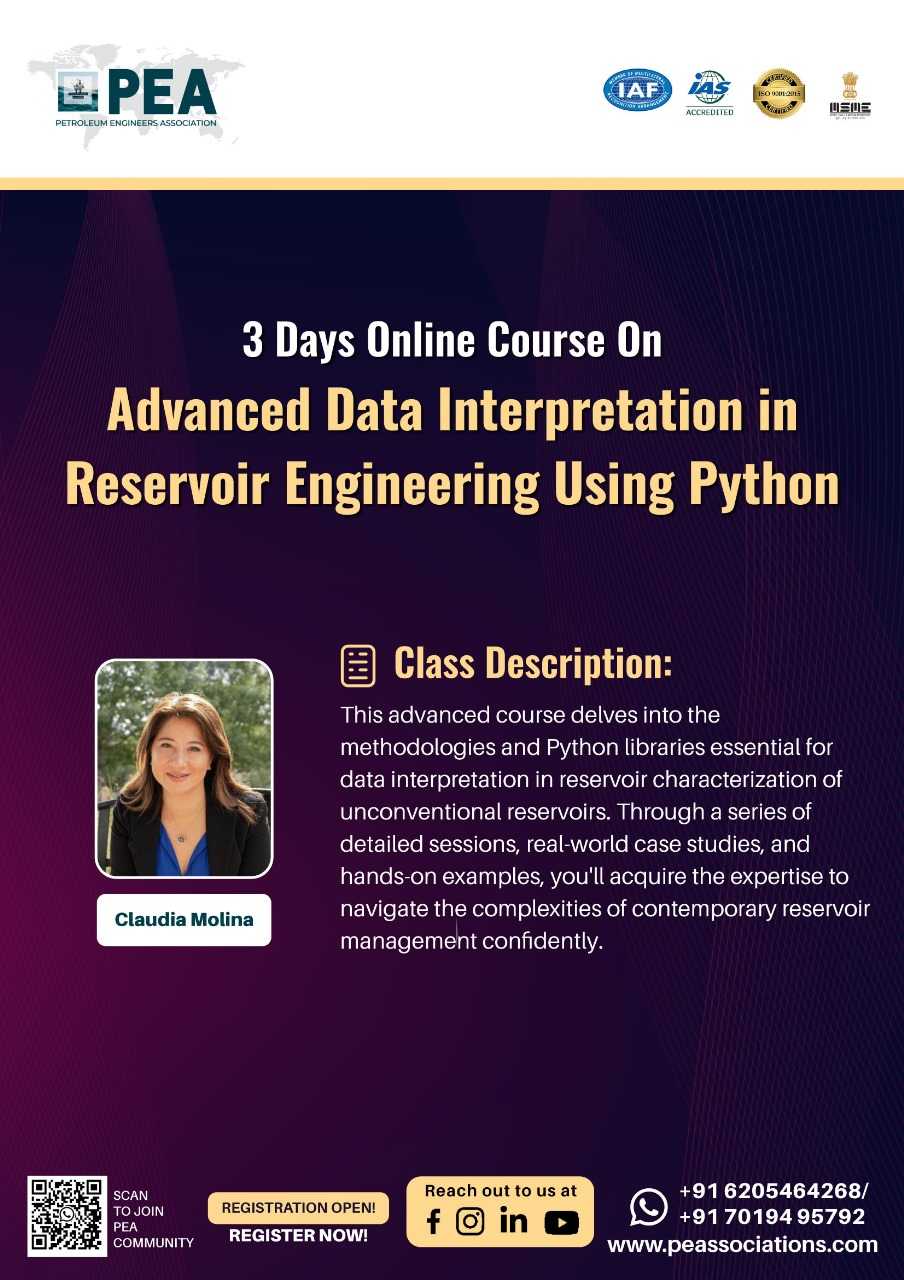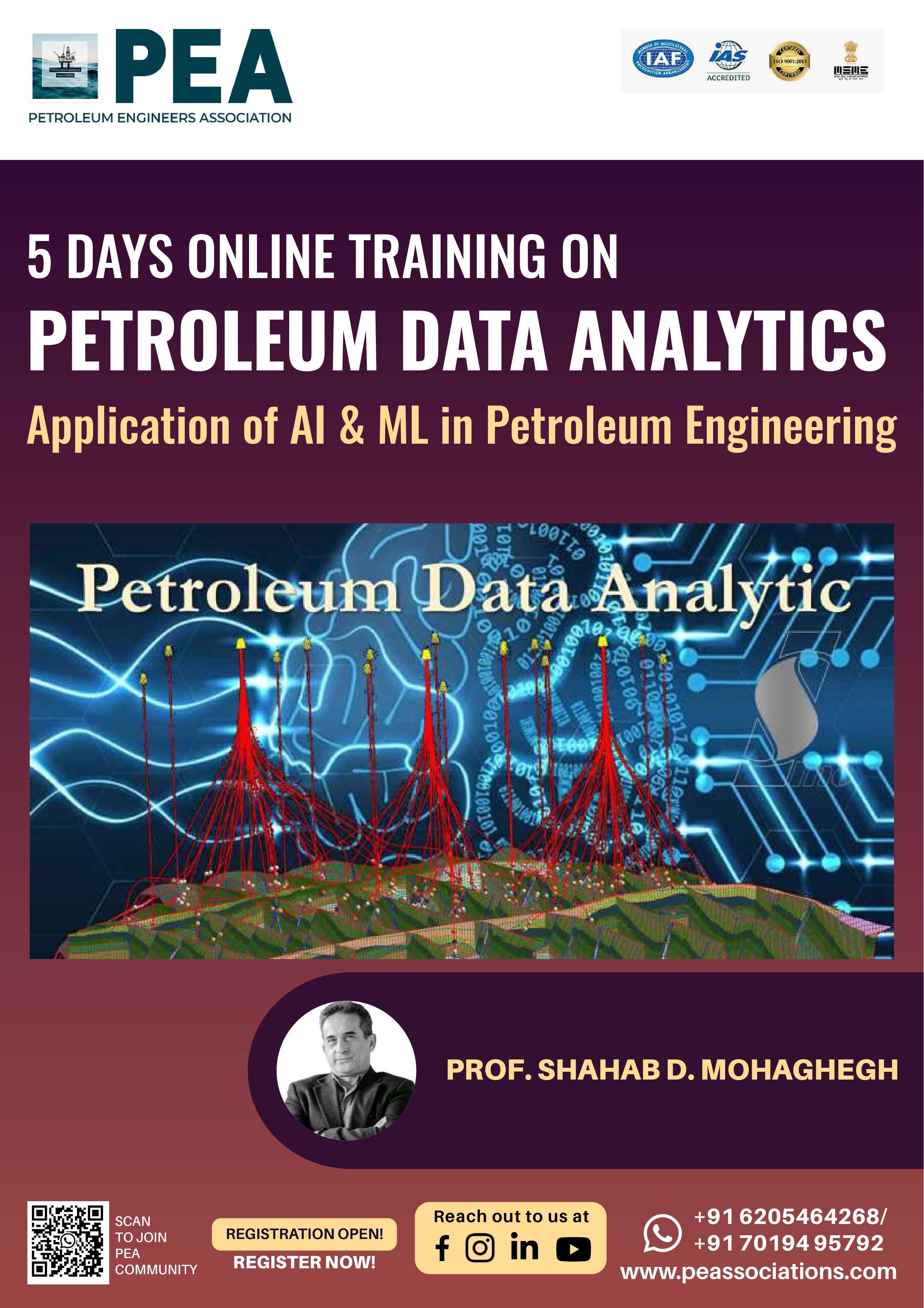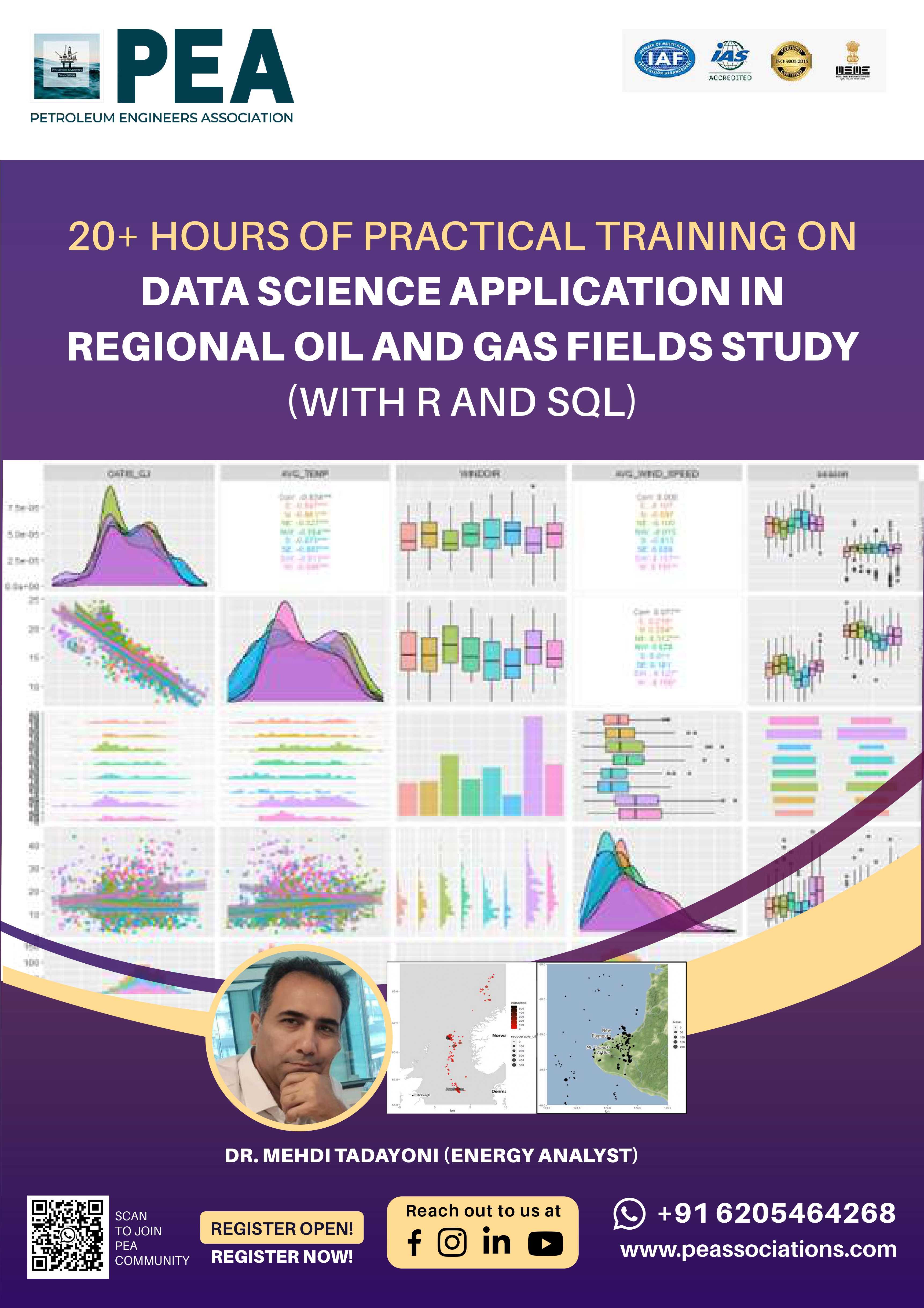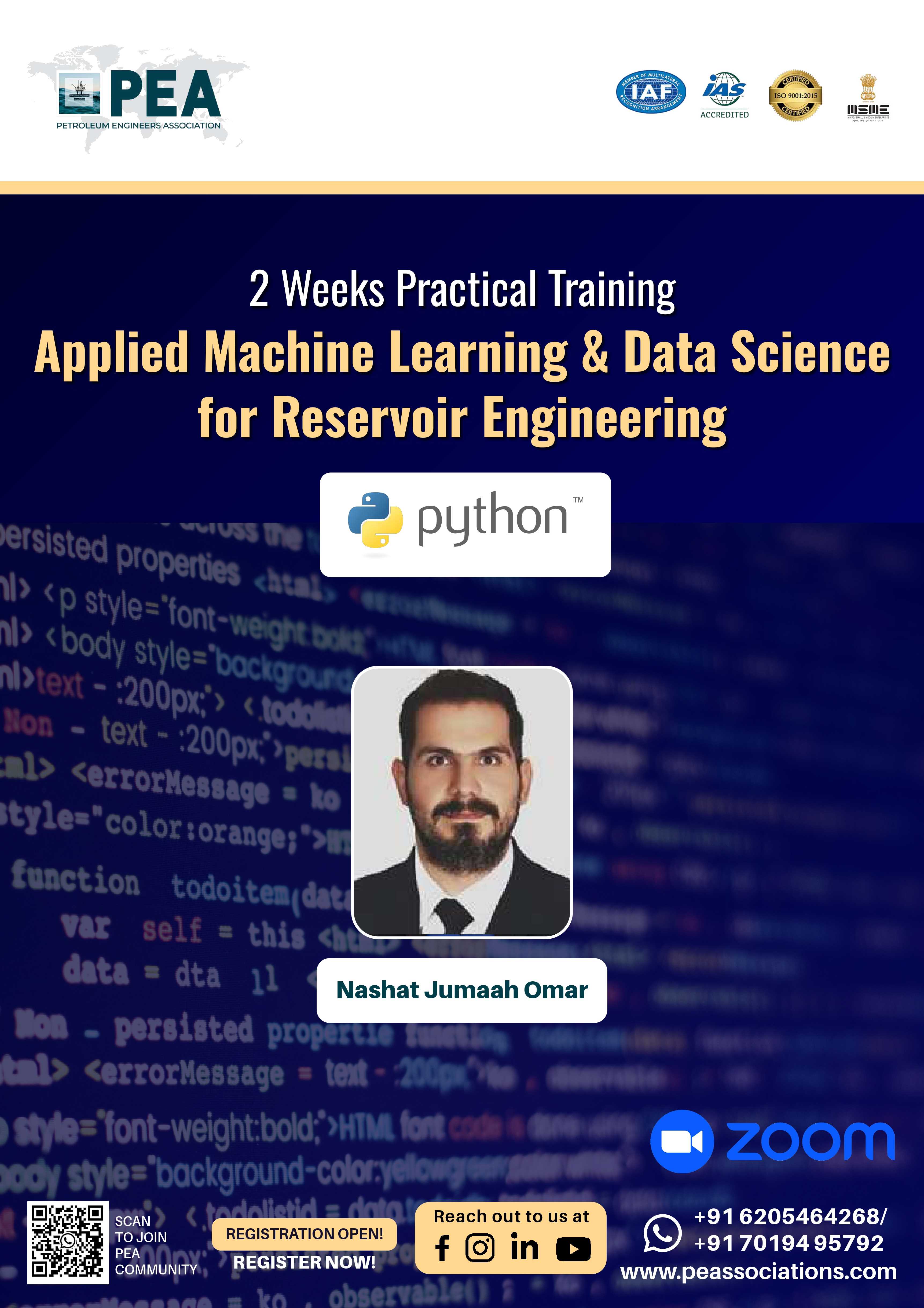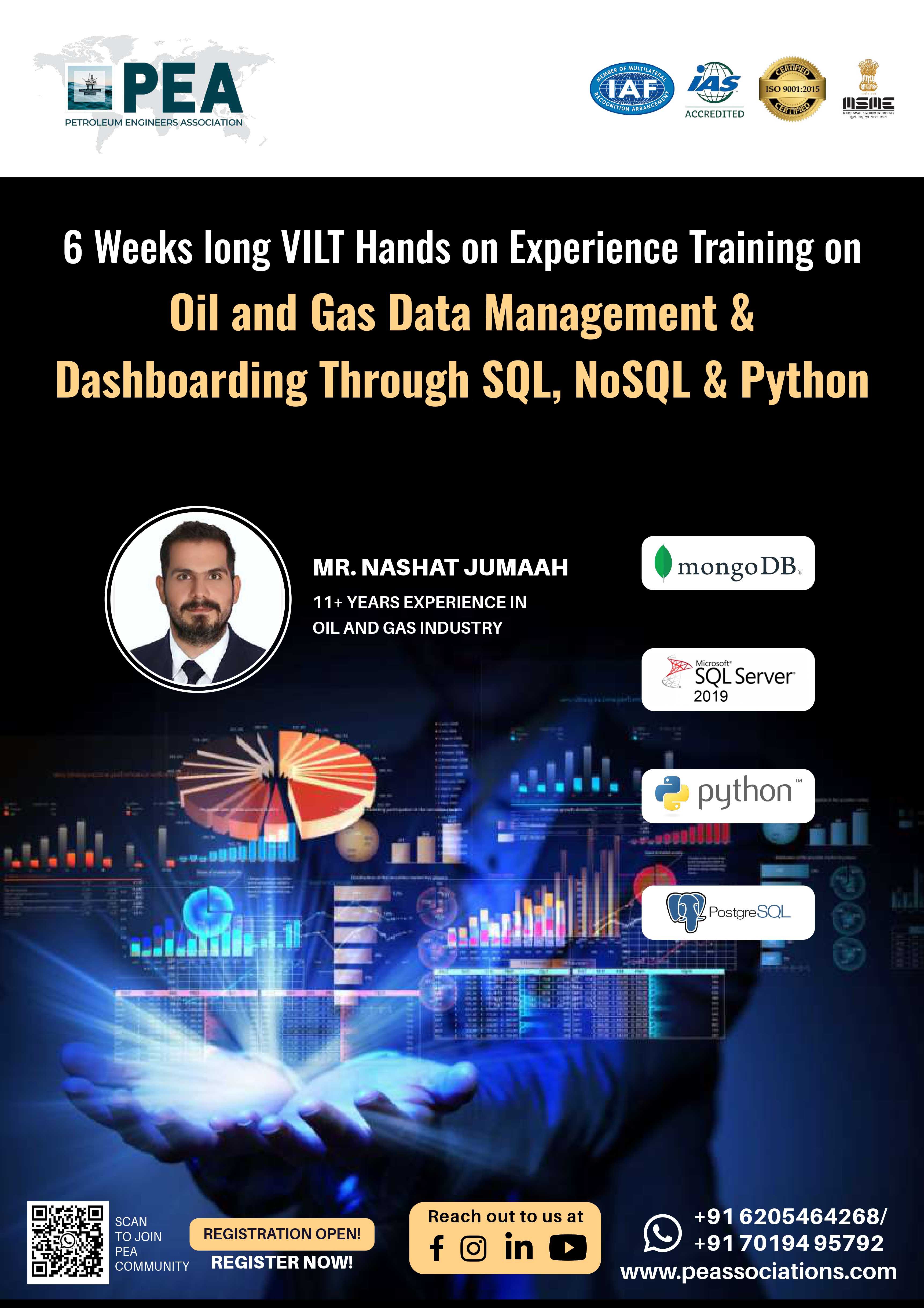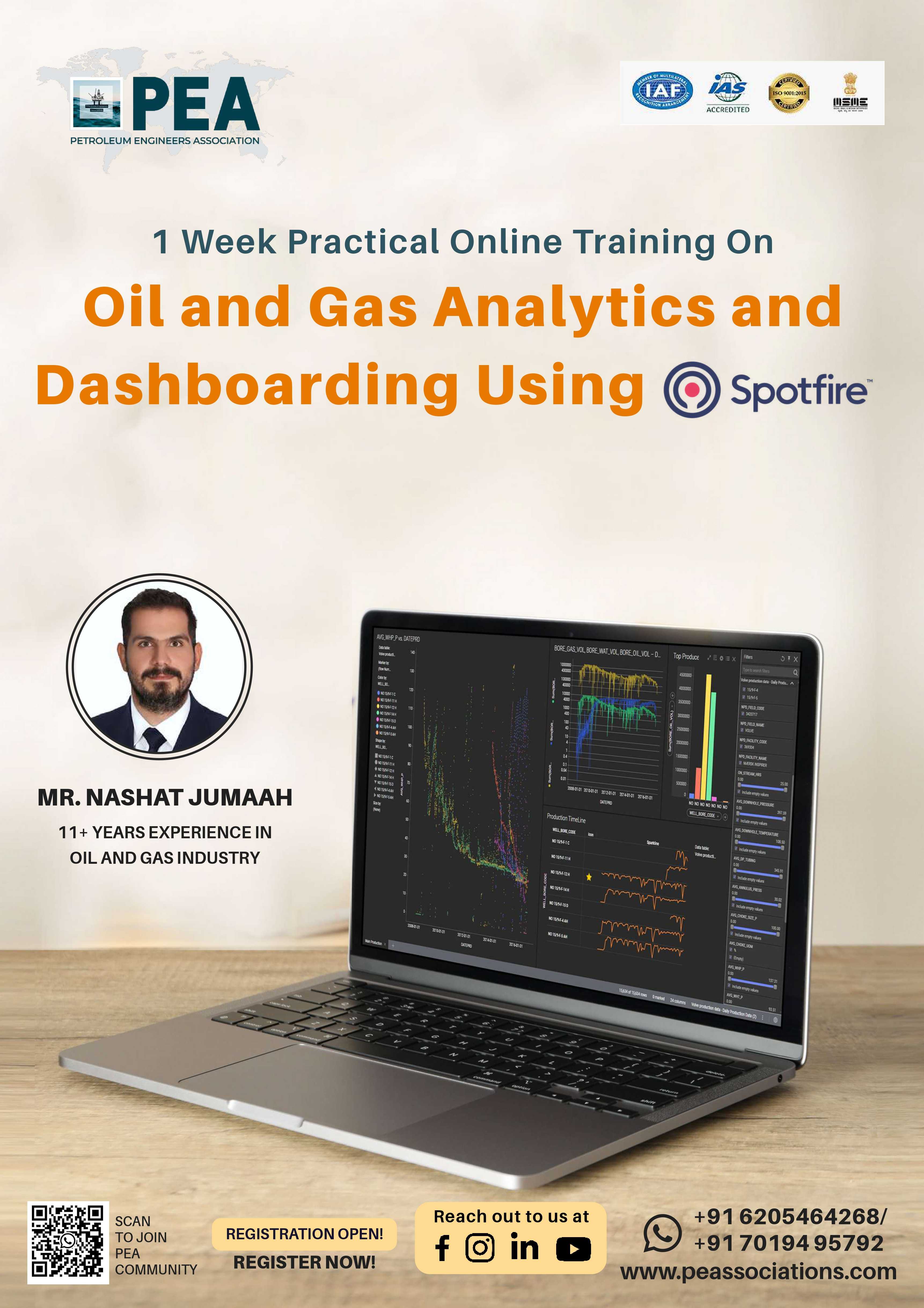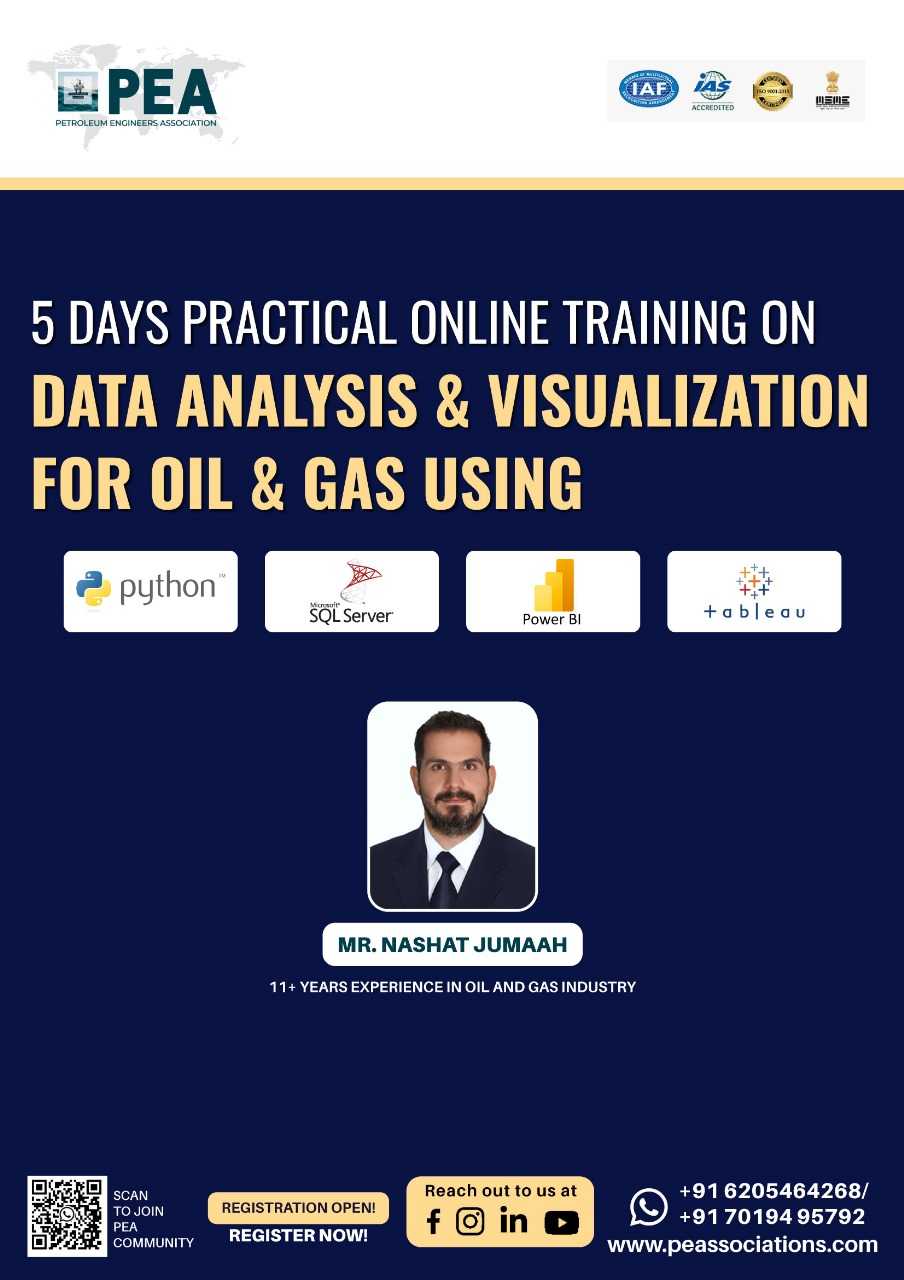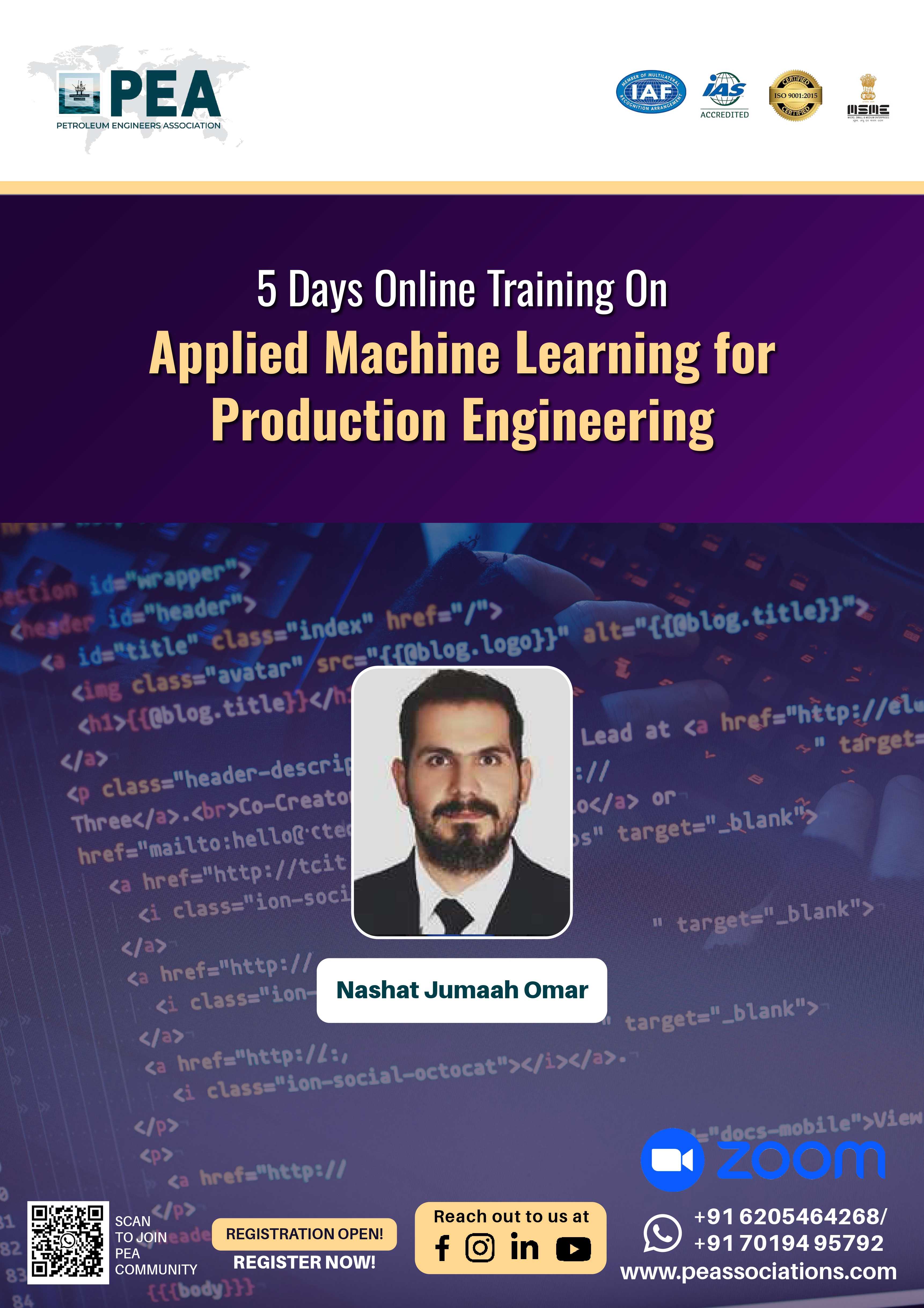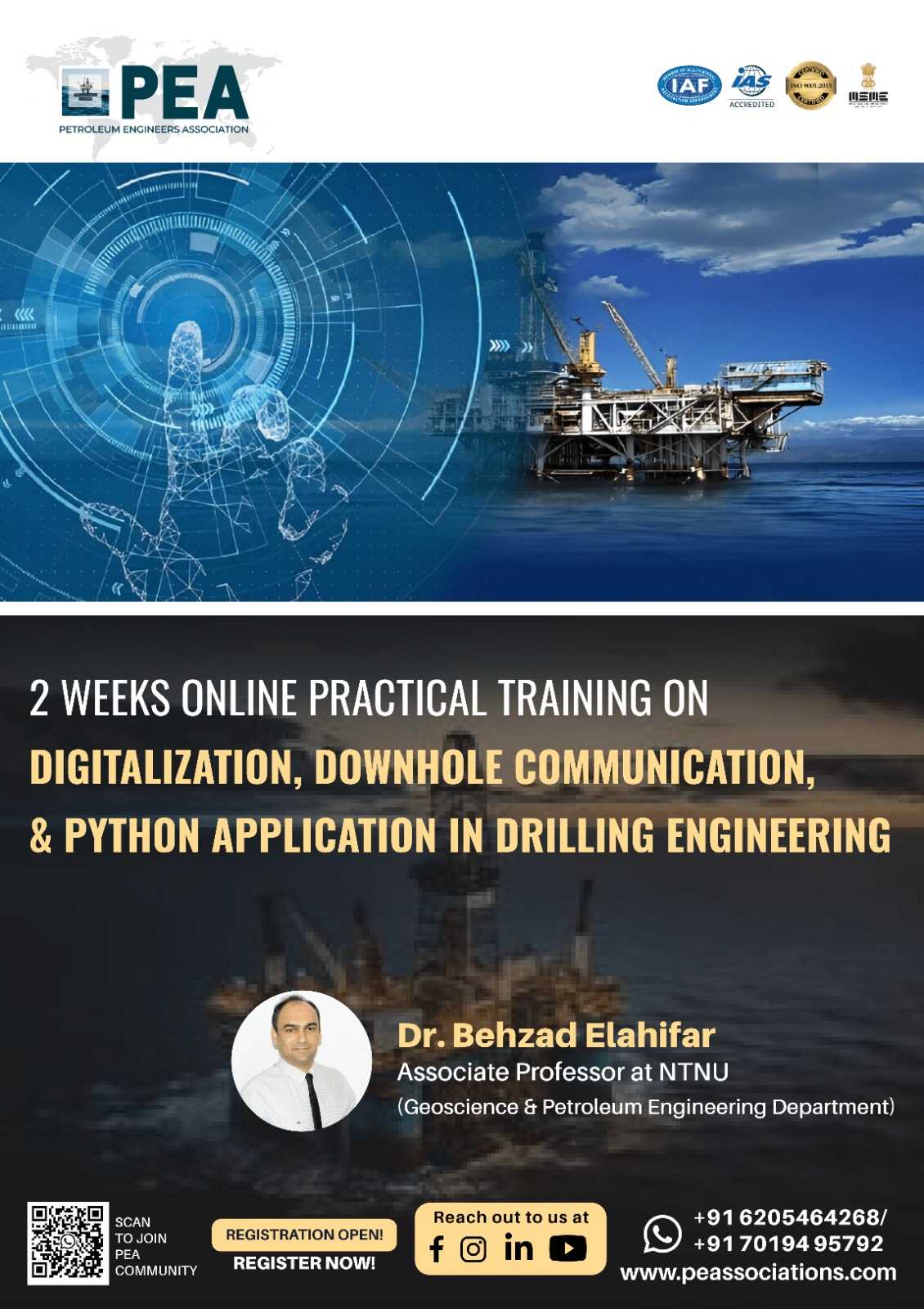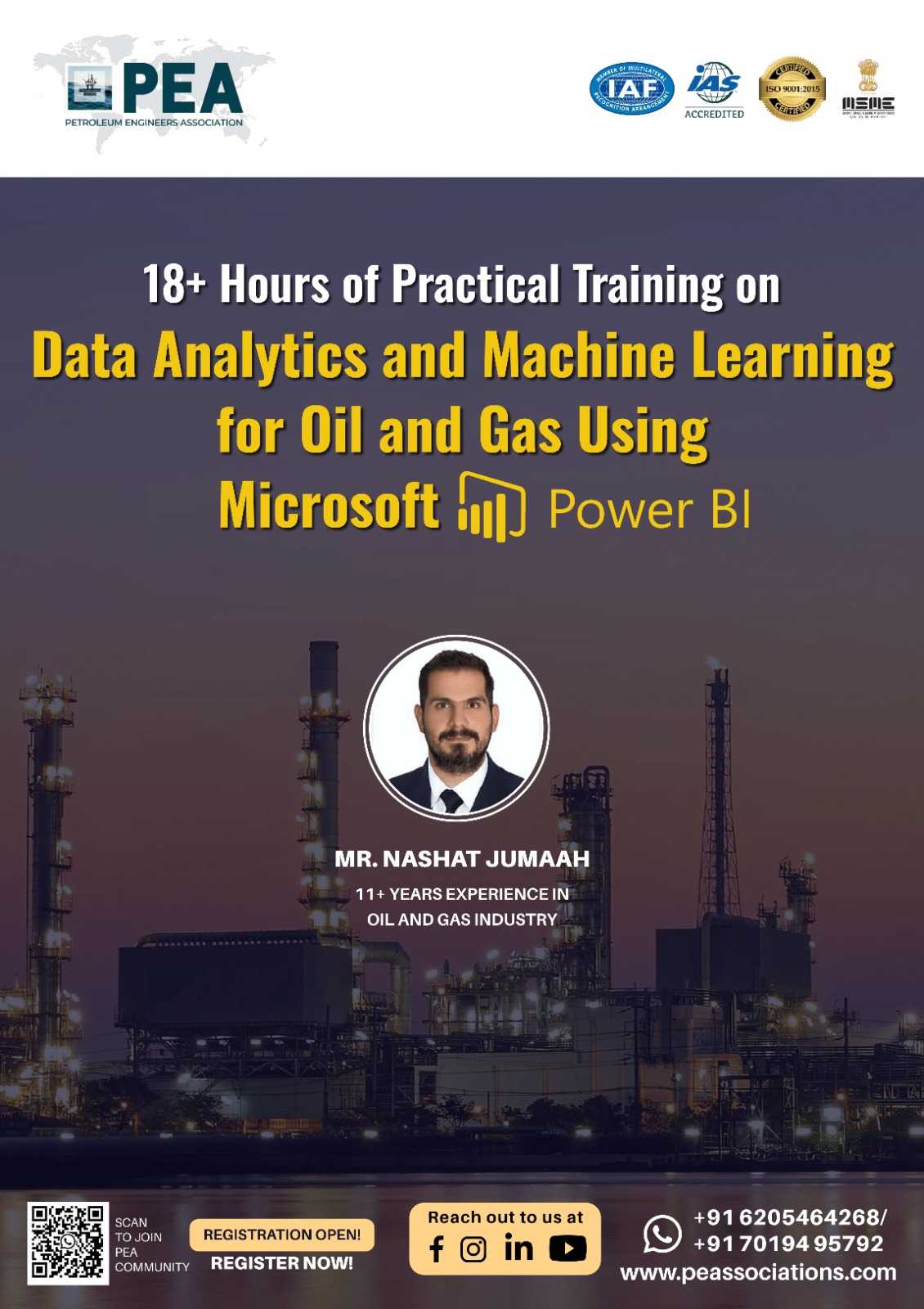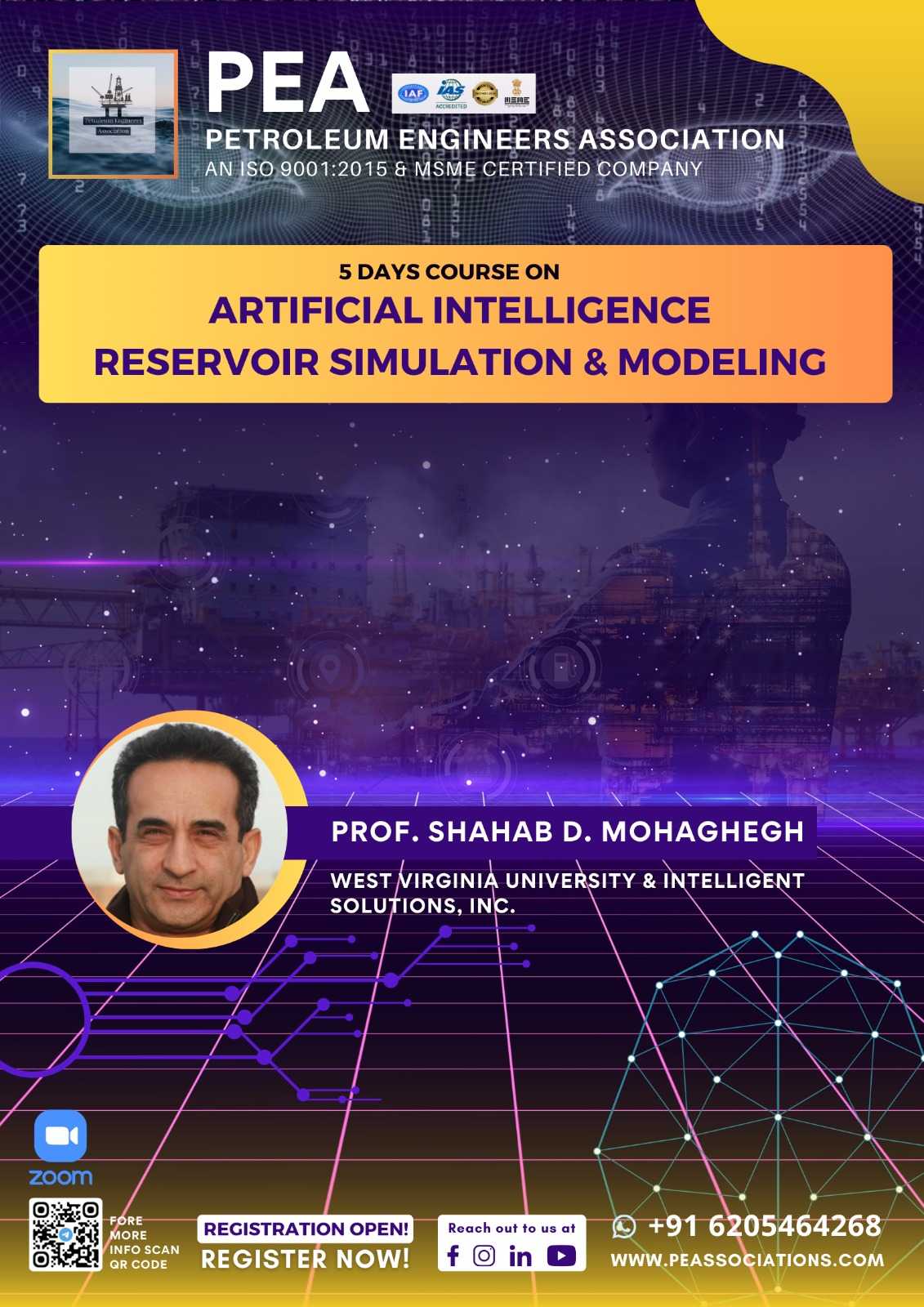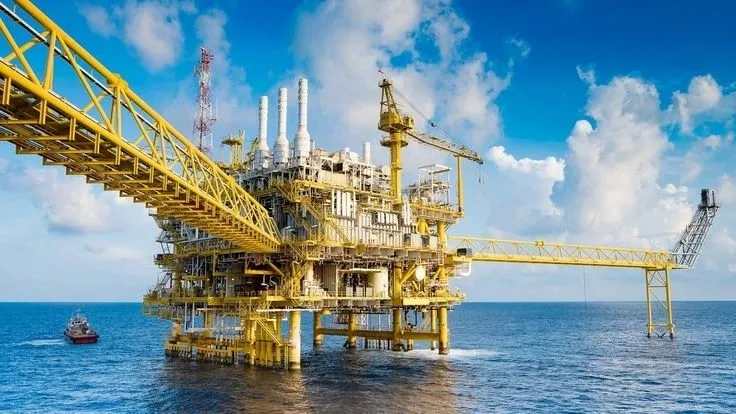Boost your team's skills and your budget! Enjoy group discounts for collaborative learning. Send an inquiry to info@peassociations.com.
Applied Machine Learning and Data Science for Production Engineering
This course introduces production engineers to applied machine learning and data science techniques, focusing on optimizing operations and decision-making in oil and gas production. Participants will learn how to apply advanced analytics to solve real-world production challenges using data-driven approaches.
Description
The "Applied Machine Learning and Data Science for Production Engineering" course equips professionals with essential skills in leveraging machine learning (ML) and data science to enhance production engineering. The course covers predictive analytics, anomaly detection, optimization techniques, and data-driven decision-making, all tailored to the oil and gas sector. Through real-world case studies and practical applications, participants will learn how to integrate ML and data science into daily operations, improving efficiency and optimizing production processes.
In today’s fast-paced oil and gas industry, leveraging advanced technologies like machine learning and data science is key to staying competitive. This course is designed to help production engineers harness the power of AI and data analytics, enabling more effective decision-making and operational optimization. Participants will explore how to apply ML algorithms and data science tools to production challenges, from predicting equipment failures to optimizing production rates.
This course follows a blended approach of theory and hands-on practice. Participants will work on real-world case studies and projects, applying machine learning models to solve production challenges. Interactive discussions, practical exercises, and software demonstrations will ensure a comprehensive learning experience.
Module 1
Introduction to Data Science and Related Methodologies
A gentle introduction to Python Programming Language
Introduction to Python Environment and Ecosystem
Data Types and Structures in Python
Introduction to Data Visualization
Working with Tabulated Data using Pandas
Basics of Data Cleaning and Transformation using Pandas.
Creating Calculations and Data Exports.
Linking Excel, CSV, and TXT to Python
Module 2
Introduction to the Concept of Clustering
Understanding Distance Metrics
Introduction to the Scikit-Learn Library for Machine Learning
Fundamental Python Expressions and Functions
Introduction to Python Plotting
Anomaly Detection Techniques
Module 3
Introduction to the Concept of Clustering
Understanding Distance Metrics
Introduction to the Scikit-Learn Library for Machine Learning
Fundamental Python Expressions and Functions
Introduction to Python Plotting
Anomaly Detection Techniques
Module 4
Introduction to Continuous Data and Corresponding Relationships
Relationship Visualization and Correlation Matrix
Introduction to Regression Analysis
Linear Regression Fundamentals
Support Vector Regression (SVR)
Xtreme Gradient Regression (XGBoost Library)
Module 5
Introduction to Time-Bounded Data in the Oil and Gas Industry
Understanding Typical Decline Curve Analysis (DCA) and Its Limitations
Introduction to Time Series Analysis (TSA)
Time Series Data Patterns and Components
Comparing Decline Curve Analysis (DCA) to Time Series Analysis
Short-Term Production Prediction Using Time Series Analysis
Simple Moving Average (SMA) and Exponential Moving Average (EMA)
Introduction to AutoRegressive (AR) Models
On successful completion of this training course, PEA Certificate will be awarded to the delegates

